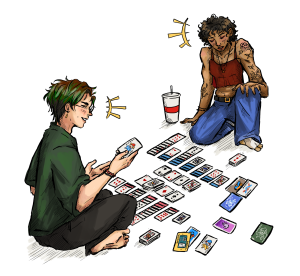“Mr. Kolpert” Brings Dark Humor to Stage
October 17, 2017
“Mr. Kolpert” opened in Harper Joy Theater last week to a bewildered audience of parents, faculty, community members and students alike. It will continue into this weekend at 8 p.m. on Oct. 27 and 28. The play, written by Gieselmann and translated by David Tushingham, is directed by Whitman Theater Professor Christopher Petit. It revolves around a perfectly normal dinner party in London that is being hosted by Ralf–a chaos theorist–and his wife. They have invited Sarah’s coworker, Edith, and her husband, Bastion. Their guests initially believe that their hosts intend to entertain them, but they soon learn otherwise–they are the entertainment.
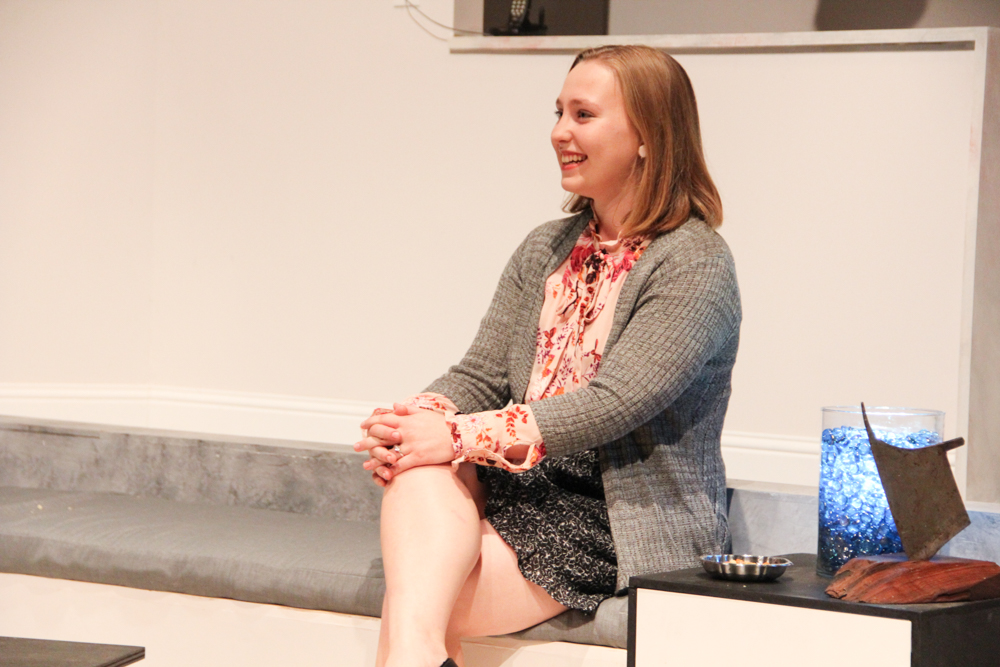
“It’s based on Alfred Hitchcock’s ‘The Rope’ and it’s about people who are bored, and looking for a way to feel something,” Petit said.
Petit also compared the dark comedic style of Gieselmann and Tushingham to the writings of Harold Pinter and Joe Orton, “which is a kind of menacing and irreverent, and highly theatrical and often very funny type of theater,” Petit added.
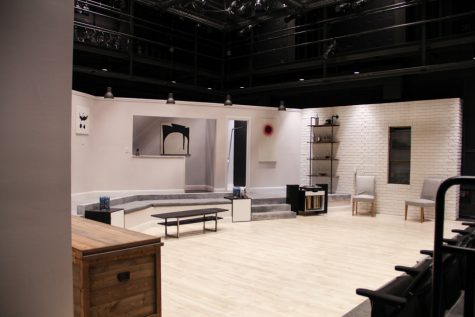
The play is about the relationship between apathy and empathy, and the normal versus the surreal. It’s also about the ability to carry out violence. This lends itself to a film-noir aesthetic, as the genre states that all of us, given the right set of circumstances, are capable of terrible things. In this case, it is the implication of murder. Have Ralf and Sarah really killed Mr. Kolpert? And if so, why?
“Mr. Kolpert” juxtaposes comedy versus darkness, while also selling the two as a cohesive whole. This is explored not only by the actors and the set, but also the clothing that each character had to inhabit. Ralf’s businessman suit and Sarah’s red dress–a token of the femme fatale–called back to its noir aesthetic, while the yellow shirt of the pizza delivery girl gave it a more lighthearted note.
Issy Kelsey, the costume designer for the show, was chosen because of the artwork that she does on the side of being a film major.
“My art has a dark side to it, but it’s not always a dark side from a depressing mentality,” Kelsey said. “Sometimes it’s more from when I’m feeling down and that comes across my art, but when I’m feeling happy it’s still gory, dark and twisted, but it’s approaching it from a more lighthearted and campy style.”
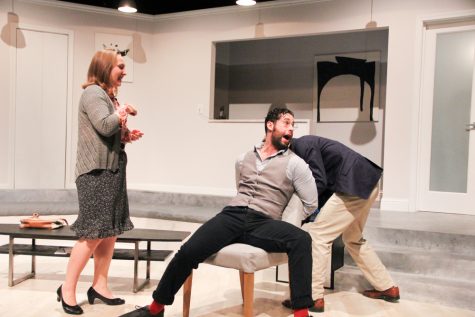
Her description could also be applied to “Mr. Kolpert,” as the darkness seems to come from a writer that understands both sides of the spectrum. The play is equal parts comedy and psychological horror, but it never collapses in on itself or forgets its purpose; rather, it is constantly self-aware. This is most easily visible in the chaos theorist, Ralf. For senior Noah Yaconelli, who played Ralf, one of the biggest challenges in conveying both the mood and the tone of his character was the character’s movement.
“For me, a big way into this character… was his physicality, and figuring out what he moves like and why he moves that way,” Yaconelli said. “He’s a chaos researcher, and I found a physicality that I feel matches him using an animal, one that is kind of his kindred spirit. [I had to learn how] to move, what parts of my body to move, and how to move similar to this animal.”
Yaconelli succeeded in conveying his character in the play. Onstage, Ralf is a blur of subtle and gratuitous movements. He is the most fluid of the characters and his dialogue also reflects this, with each line contrasting an outwardly comedic perspective and a more subtly sinister motive.
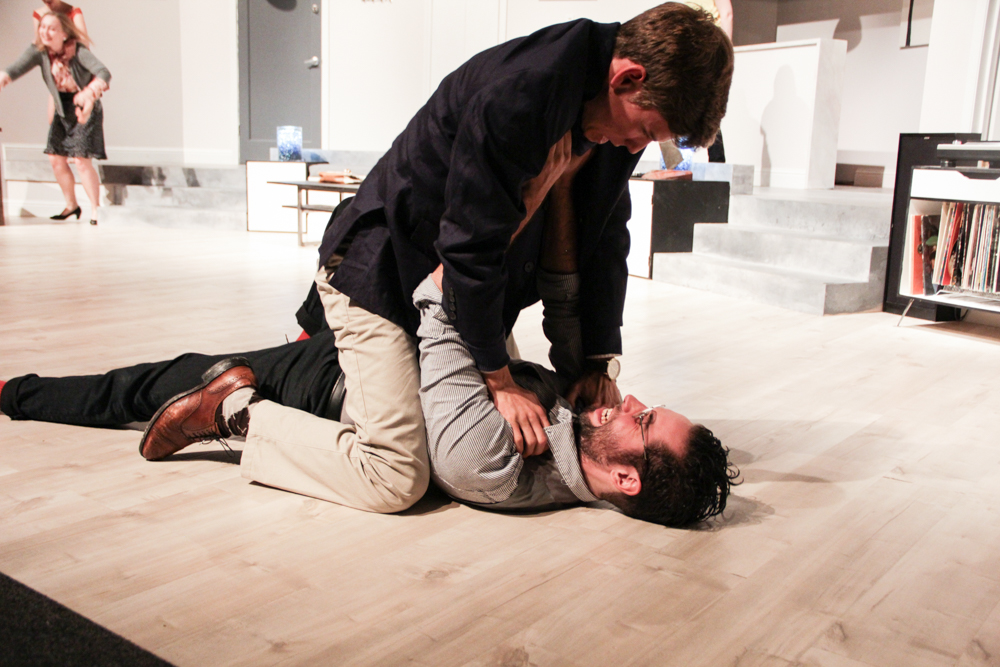
“Mr. Kolpert” is an ambitious play; it combines post-modern idealism with the true caliber of humanity, and neither comes away unscathed. It tears at itself, comparing and contrasting so many different ideas in just over an hour that the audience is simply caught up in the flow. When at last you leave the theater, the play will resonate in your mind for days to come, for it is a truly spectacular experience.

